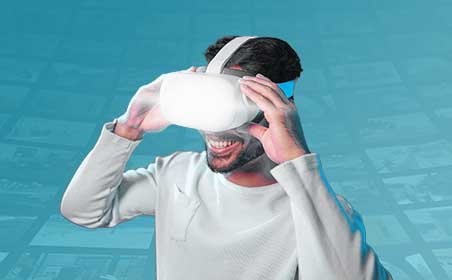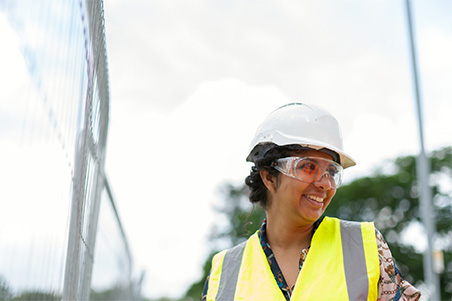
Optimize your safety induction with virtual reality
Onboarding, integration of new teams, reception of visitors, reception of external actors... Each time you have to bring someone into your production site or before a new team takes over, you have to make sure that all safety instructions are understood and respected by setting up a complete and adapted training. To do this, you can give a quick briefing, hoping that everyone will pay attention to your instructions. Or alternatively, you can use virtual reality
Your safety induction with virtual reality for effective onboarding
Be effective: put the newcomers directly in risk situations and confront them with dangers. Watch their reactions and give them the necessary information and methods to help them better identify these dangers in the future.
Learners are 275% more confident* in applying what they have learned in virtual reality compared to traditional learning
Emphasize specific safety points and processes in your training and ensure your safety onboarding is successful
A wide choice among more than 30 VR workshops developed with major accounts to always stick to the realities of the field
Whatever your sector of activity, Immersive Factory offers you immersive workshops that are relevant, realistic and customizable. Thus, you choose during the training what types of anomalies you want to see, you define yourself the time allowed to find the anomalies…
Simulations, hazard spotting, educational courses, our VR learning workshops take various forms and are designed with major players in the sector.
* According to the study “The Effectiveness of Virtual Reality Soft Skills Training in the Enterprise” from PWC
Discover all our training workshops
They trust us




























Why choose virtual reality for my onboarding?
You may already have your habits for welcoming and training a new team: presentation, powerpoint, videos, images... However, most of the time accidents in the workplace happen shortly after the onboarding. This is due to a training that is too theoretical and not tangible enough.
Our virtual reality awareness modules immerse you entirely in a realistic 3D environment. If you don't apply the instructions, if you don't detect the risks, then you will suffer the consequences of your failures in the virtual workshop. This is a great way to surprise the learner during his training and to make sure he never misses this awareness message again once he is on the job!
Why is safety induction so important?
A safety briefing is the process of introducing new employees to the company's safety policies and procedures. This process is important because it ensures that employees are aware of the hazards to their health in the workplace and the information and means to prevent them. It also reduces the probability of accidents and injuries in the workplace.
Some companies sometimes choose to completely ignore employee safety training, but this is a risky decision. Without proper safety training your employees may be putting themselves in danger without even realizing it. Furthermore, if an accident occurs, you can be held responsible if it is determined that your employees were not properly trained on the job to avoid these dangers.


Therefore, it is essential to take the time to train your employees in workplace safety. This includes training in hazard identification, proper work methods and behavior, knowledge of safety standards, and the proper use of PPE. This will not only protect your employees, but also your company.
If safety induction helps to retain employees, reduce turnover and increase their efficiency from the very first moment they start working, it also allows new employees and visitors to learn about the company's values and policies, particularly in terms of safety and EHS. This training is therefore an important moment to ensure that all those who are about to enter the production site know the safety rules, the way to circulate in such a site, the vigilance points…
Combining prevention and welcome induction for a safer workplace
Workplace accidents can be costly, both in terms of financial impact and loss of life. In order to reduce workplace risks, it is important that companies focus on prevention. This means implementing safety measures and training employees to perform their tasks safely. By taking these steps, companies can create a safe and productive work environment for their employees.
There are several ways to prevent workplace accidents. One way is to provide employees with proper training. This includes teaching them how to perform their tasks safely and use any necessary safety equipment. Another way to protect the health of your employees is to implement safety measures in the workplace. This can include installing guardrails or posting signs to warn employees of potential hazards.
By taking preventative measures, companies can save lives and money. Employees who feel safe in their work environment are more likely to be productive, so it's a win-win situation for all parties involved. When it comes to workplace safety, prevention is the best policy.
The implementation of your security reception more concretely
Have about 10 people pass by per hour and per VR headset. A screen feedback allows you to see what the participant sees and possibly comment on his course to bring his attention to a particular rule.
In all cases, a correction will be proposed at the end of the exercise in order to come back in detail on each missed anomaly. This way, you open the discussion on security issues, which also helps to break the ice when integrating new teams
